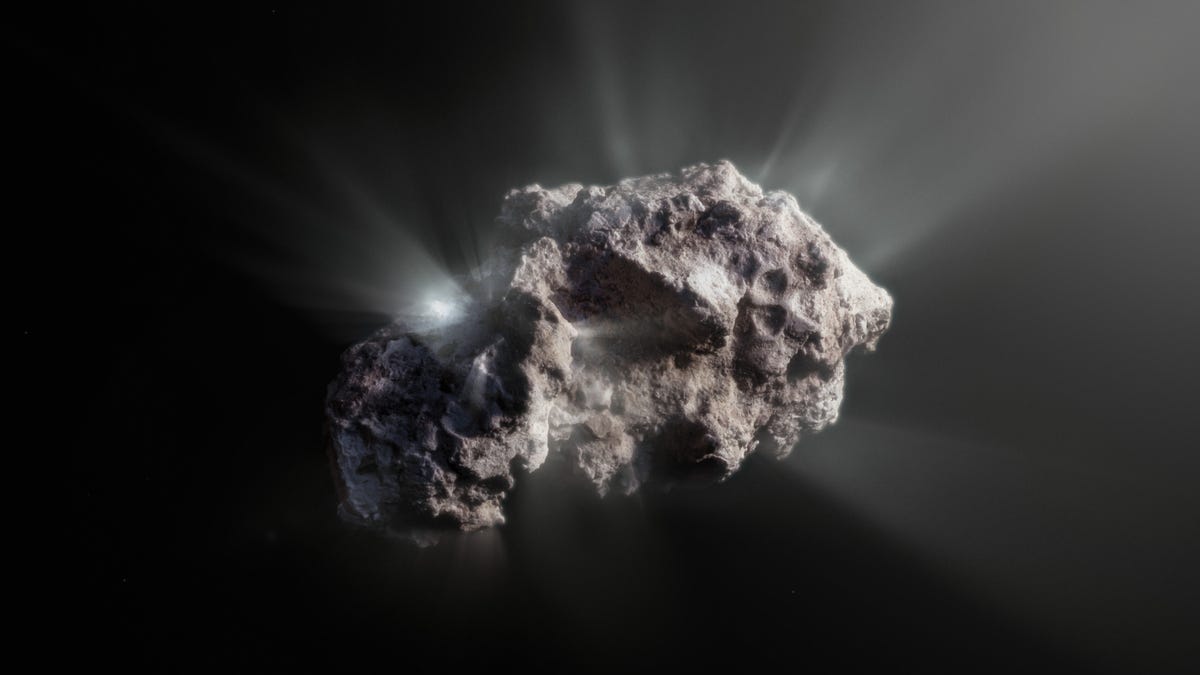Interstellar comet Borisov took a remarkably long and lonely trip, scientists say
New research indicates the object from beyond our solar system is also the most pristine comet ever seen.

Artist's impression of what the surface of the 2I/Borisov comet might look like.
A comet named 2I/Borisov became just the second interstellar object to be observed in our solar system (the first one is a little more famous) when it passed through in 2019. Now, new science finds that not only did it travel far to reach us over many eons, but it also took a very isolated route.
New observations indicate that Borisov is the first comet ever observed in truly mint condition, leading astronomers to suspect it has spent its lifetime wandering through deep space without ever coming near another star. By avoiding all that potential solar wind and radiation, Borisov may now provide a detailed snapshot through time and space of the distant cloud of gas and dust it formed from over 4 billion years ago.
"2I/Borisov could represent the first truly pristine comet ever observed," says Stefano Bagnulo of the Armagh Observatory and Planetarium in Northern Ireland, in a statement.
Previously, comet Hale-Bopp, which was widely observed in the 1990s, was thought to be the most pristine comet known. By studying the color and polarization of light from Borisov, scientists determined it appears to be even more pristine.
"The fact that the two comets are remarkably similar suggests that the environment in which 2I/Borisov originated is not so different in composition from the environment in the early solar system," says Alberto Cellino, from the Astrophysical Observatory of Torino in Italy.
Bagnulo and Cellino are co-authors on a study published Tuesday in Nature Communications that lays out the findings, along with a companion paper in Nature Astronomy.
The second paper, led by Bin Yang from the European Southern Observatory in Chile, finds that Borisov's tail or coma is made up mostly of tiny pebbles that differs from the less uniform clouds of debris found in comets from our solar system.
"Imagine how lucky we were that a comet from a system light-years away simply took a trip to our doorstep by chance," says Yang.
This image was taken with the FORS2 instrument on ESO's Very Large Telescope in late 2019, when comet 2I/Borisov passed near the Sun.
Bagnulo adds that he's looking forward to future opportunities to study the next interstellar visitor up close.
"ESA (European Space Agency) is planning to launch Comet Interceptor in 2029, which will have the capability of reaching another visiting interstellar object, if one on a suitable trajectory is discovered."
That mission could follow in the footsteps of ESA's Rosetta mission that visited a comet, but Comet Interceptor aims to specifically target a pristine comet, just like Borisov, to be able to look far back in time in even greater detail.
Follow CNET's 2021 Space Calendar to stay up to date with all the latest space news this year. You can even add it to your own Google Calendar.

